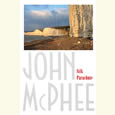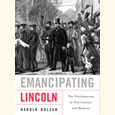Explosive Passions
Ariel Lawhon’s Flight of Dreams re-imagines the final voyage of the Hindenburg
Ariel Lawhon’s new novel, Flight of Dreams, fits into the narrow genre known as historical mystery: the story behind a public tragedy whose ending everyone knows but whose cause remains unknown. The crash of the Hindenburg in May 1937 had devastating consequences—thirty-five deaths and the sudden end of the age of airships—but investigators have not been able to agree on how the fire started. Flight of Dreams capitalizes on the historical lacuna. Following seventy-eight years of inconclusive scrutiny of the physical evidence and the last survivor’s death in 2014, Lawhon writes in an author’s note that she was interested in the Hindenburg precisely because historians have given up on solving the mystery. “I built this story within those blank, unknown spaces,” Lawhon writes.
 In the opening chapters, as the flight launches from Frankfurt, Lawhon introduces two alarming pieces of the puzzle, both of which are verified by the historical record. First, the ship’s officers have received credible bomb threats and are busily investigating all possible leads. Though Commander Pruss assures elite passengers that “we would not let anyone destroy this great airship,” he confesses that the Hindenburg does have “one great weakness”: hydrogen, which when mixed with oxygen becomes combustible. “This ship was designed to be lifted by helium. Which is not flammable,” Pruss explains. But the U.S. has cornered the world’s supply helium, and the Germans have resorted to using hydrogen. In no other novel has the lighting of a cigarette or tiny sparks flying from a child’s metallic toy carried such grave implications.
In the opening chapters, as the flight launches from Frankfurt, Lawhon introduces two alarming pieces of the puzzle, both of which are verified by the historical record. First, the ship’s officers have received credible bomb threats and are busily investigating all possible leads. Though Commander Pruss assures elite passengers that “we would not let anyone destroy this great airship,” he confesses that the Hindenburg does have “one great weakness”: hydrogen, which when mixed with oxygen becomes combustible. “This ship was designed to be lifted by helium. Which is not flammable,” Pruss explains. But the U.S. has cornered the world’s supply helium, and the Germans have resorted to using hydrogen. In no other novel has the lighting of a cigarette or tiny sparks flying from a child’s metallic toy carried such grave implications.
Lawhon, who lives near Nashville, assembles the cast with alacrity, immediately raising speculation about which of the characters will trigger the fatal events. Identified by their roles (The Cabin Boy, The Stewardess, The Navigator), the principal actors find themselves pushed toward life-altering decisions during the three-day, trans-Atlantic flight, long before the catastrophe expunges their histories and hopes. Emilie Imhoff, a young widow with a dangerous secret, must choose between emigrating to the U.S., where she would enjoy relative freedom, and returning to Germany and the prospect of new love. The Journalist, Gertrud Adelt, and her husband have been coerced by German officials into promulgating Nazi propaganda abroad. At risk is their one-year-old son, held hostage by a regime that takes every opportunity to exploit resources and exert dominance.
While private drama occupies the foreground of Lawhon’s novel, the specter of Hitler is never far from the characters’ minds. “The Nazi symbol represents the white elephant in the room, a thing to be avoided in civilized discussions,” Lawhon writes. “Ignore it long enough and it will go away.” But the mysterious American on board, skulking about the zeppelin with sinister designs, declares in the dining cabin that he is undeceived by the Hindenburg’s veneer of Teutonic glamour. “Whatever else this airship might be, it was funded by the Nazis and used for their purposes,” he says. The story continually reminds us that horror awaits the passengers and crew at the end of this voyage, but far greater atrocity is about to envelop all of Europe.
 Lawhon deftly integrates her research regarding the technical specifications of the zeppelin, offering enough detail to pique the interest of aviation buffs without slowing the pace, Tom Clancy-style, with bloated paragraphs on wind shear or thrust vectoring. The Navigator, the novel’s romantic leading man, nimbly saves the airship from colliding with cloud-shrouded mountains, but quickly the narrative returns its attention to emotional vicissitudes. The most impressive facts Lawhon supplies relate to the ship’s colossal scale. Moored, the Hindenburg rises “almost sixteen stories tall and over eight hundred feet long,” with “massive tail fins emblazoned with fifty-foot swastikas.” When the action moves outside the passenger area, Lawhon invites readers to imagine “a massive T-shaped cruciform brace … and then a short distance beyond that the spiral staircase that connects the keel catwalk to the axial catwalk eighty feet above.” Plenty of room, in other words, to conceal mischief.
Lawhon deftly integrates her research regarding the technical specifications of the zeppelin, offering enough detail to pique the interest of aviation buffs without slowing the pace, Tom Clancy-style, with bloated paragraphs on wind shear or thrust vectoring. The Navigator, the novel’s romantic leading man, nimbly saves the airship from colliding with cloud-shrouded mountains, but quickly the narrative returns its attention to emotional vicissitudes. The most impressive facts Lawhon supplies relate to the ship’s colossal scale. Moored, the Hindenburg rises “almost sixteen stories tall and over eight hundred feet long,” with “massive tail fins emblazoned with fifty-foot swastikas.” When the action moves outside the passenger area, Lawhon invites readers to imagine “a massive T-shaped cruciform brace … and then a short distance beyond that the spiral staircase that connects the keel catwalk to the axial catwalk eighty feet above.” Plenty of room, in other words, to conceal mischief.
Within this tale of doomed lovers and desperate schemers, Lawhon leavens the incipient dread with colorful diversions and amusing side stories. The adolescent Cabin Boy experiences his first kiss; the Journalist and her husband find time to make love amid their urgent investigations. The Stewardess’s involvement with a boisterous German family, whose father is on his way to a corporate appointment in Mexico City, offers her a glimpse of a possible future far from the surveillance of the Nazis.
In Flight of Dreams, Lawhon proves herself adroit in adding flourishes to the mystery that give it suspense and human interest in equal measure. A gun is stolen; a dog is unclaimed in the storage area; a famous acrobat takes a dare to scale the airship’s vaulting ribs. Told in the present tense throughout, this novel builds tension scene by scene. With clever orchestration of voices and cogent choreography of movement, Lawhon delivers a novel filled with interlocking secrets, betrayal, and intrigue, but it never loses sight of the devastation to come.

Sean Kinch grew up in Austin and attended Stanford University. He later earned a Ph.D. in modern fiction from the University of Texas . He now teaches English at Montgomery Bell Academy in Nashville.


